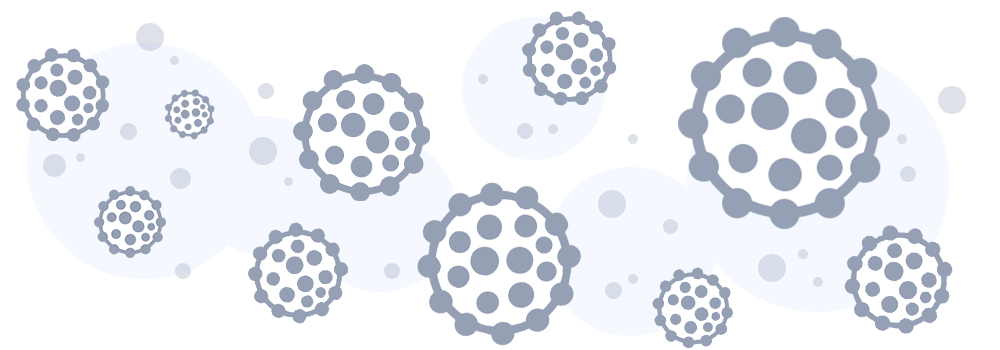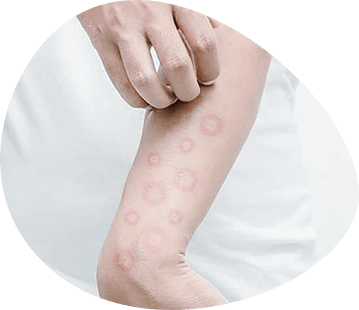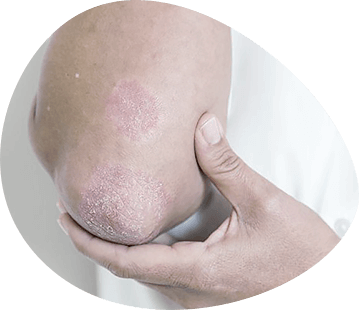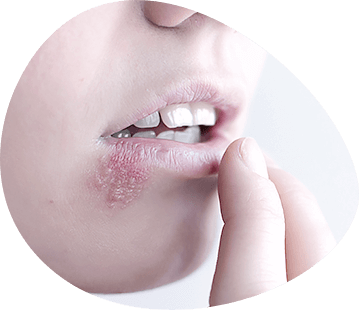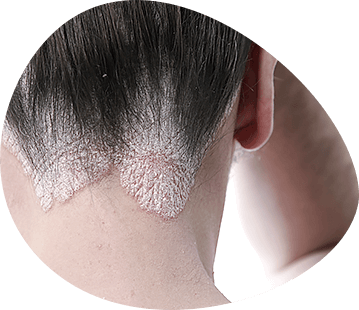Valacyclovir: A new cost-effective pill for viruses
The human body is a masterpiece; it maintains a balance between all its architecture to allow an unequaled performance. The blood flows throughout our body in perfect quantities to keep vital functions, our biological systems work synergistically in balance so we can stand up daily and live; besides, the immune system's vital goal is the ability to react to any external aggression; infections by dangerous microbes include.
Through the immune system, our body can react to any warning thanks to a structures complex organization and elements; this precise but very important function represents a significant role during diseases.
According to human physiology, immunity can be classified into two: innate and acquired.
Acquired or adaptive immunity is the one based on antibodies and T lymphocytes that life-arises thanks to a constant exposure to certain factors called allergens.
Innate immunity is the one we are born with, which is made up of the physical, chemical, or biochemical, microbiological, and cellular defenses that compound us from the moment of childbirth until the day we die.
This immunity can be improved as life progresses, for example; at birth, our intestinal immunity is immature, however, as our diet expands, our response capacity to certain foods grows.
Chemical and biochemical mechanisms are able of producing an acidic environment to prevent dangerous germs survival and adherence once they get into our body, such as gastric mucus, pH, or acute phase proteins and enzymes (elements that improve all of the body chemical reactions and destroy any element in its path).
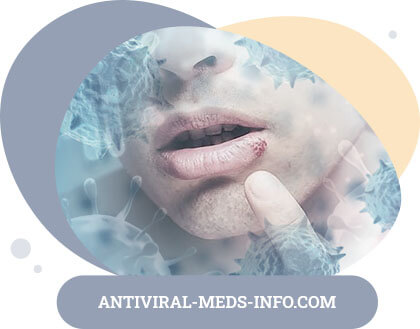
Physical barriers are defined as all those parts that make up our body walls; the skin (the largest organ of the body), the mucous membranes, which line all the internal body cavities, the epithelium and these mucous membranes secretions. All of this to avoid damage from blows, burns, and the bacteria, viruses, or parasites entry.
The microbiological barrier represents one of the primary pillars in our body defined as the entire bacteria flora that lives peacefully in our body. Thanks to them, they compete with dangerous germs to maintain our microbiota, and yes, we have microbes in our body, especially in the mouth, vagina, and intestines, which are necessary to keep.
Finally, we have the cell barrier, it compounds the army of cells that work hard to fight the infectious agent, be it bacteria, viruses, parasites, or fungi. These cell troops are identified by having different specialized functions, some work triggering an inflammatory reaction at the infectious bacteria area (neutrophils), others attack parasites (eosinophils), while others are tied to fixing the injury area where an infection has occurred (platelets).
All these pieces play a key function in the immune puzzle of our body and if any of them fails, our health and biological stability can be affected.
Valacyclovir (Valtrex®) is an antiviral drug Acyclovir derived approved by the FDA for more than 20 years in the United States. This has been in circulation since 1995 and its chemical composition quite differs from Acyclovir because it ends up being L-ester –valil after its ingestion, a chemical element with greater absorption and biological availability than Acyclovir itself, reaching the desired body levels in less time.
So what is Valacyclovir? Shortly, it is a drug that was born from the elements that compose Acyclovir, just taking into account certain details of its chemical composition to help transportation, intestinal absorption, and serum levels, achieving better therapeutic results in less time and reducing the illness progression.
Being Valacyclovir an antiviral drug, it only works in viral infections by attacking the viral DNA structure to inhibit its replication to finally stop the disease progression in a few days.
Mechanism of action: How does Valacyclovir work?
As we already mentioned, Valacyclovir is a drug from the antivirals group composed by Acyclovi L-valine ester, the first antiviral created in the world.
Viruses are potentially pathogenic and dangerous germs that differ from fungi, bacteria, and parasites because they need our body cells to live and reproduce, that is, they are intracellular organisms that feed on our proteins to survive.
There are normally armies of cells in our body that fight against these viruses when an infection has been placed; these are called NK lymphocytes, so when an infection is determined in its early stages, blood levels of lymphocytes rise in blood tests.
Viral infections are self-limited conditions in most cases; they could heal on their own depending on viral load and immune state, being these, one of the most important factors in infectious disease.
Viral load is the number of viruses present in the body's blood and if it is huge, the symptoms could be severe and it will be more difficult for lymphocytes to destroy the virus.
We suppose you are wondering why you should know all this information, well mainly because it is necessary to know the virus conformation and how it works to understand the Valacyclovir mechanism of action.
Once the drug is orally ingested, it travels throughout the digestive tract, is absorbed by the enterocytes (intestinal cells) then is transported to the liver into the small blood vessels, where its metabolism occurs.
After its administration, Valacyclovir is almost instantly transformed to acyclovir and valine, reaching a blood plasma availability of almost 60% but that is not all, this bioavailability is not changed or influenced by food or drinks.
When it travels to the liver its metabolism occurs, this one is entirely hepatic and here it is transformed into smaller fractions such as carboxymethoxy methylguanine by the enzymes alcohol and aldehyde dehydrogenase, and 8-hydroxy-acyclovir by the enzyme aldehyde oxidase, these are nothing more than substances that catalyze or enhance chemical reactions to allow a thing to be used by our body into their degraded form.
These small particles travel again through blood circulation until they reach the specific site of action once liver metabolism has finished, this happens in about an hour or half an hour, and they are responsible for fighting against the virus when arrived at that site.
When Valacyclovir reaches the site of infection it works inhibiting the virus reproduction capacity; it first accesses the cell where the virus is stored (infected cell) to second inhibit its multiplication during its phosphorylated form, but… what does this mean? This means that Valacyclovir is selective performing by only acting in the virus replication process. A large part of its effectiveness is attributed to this.
By acting only on already phosphorylated viruses, it means that it does not attack all the viruses in our body, but those that are causing the disease. Remember that certain microorganisms are necessary to keep a stable biological system and innate immunity.
The phosphorylation stage of the virus requires an enzyme called thymidine kinase and the existence of this makes it possible to differentiate between infected and uninfected cells, so this drug can be guided while acting.
Once Valacyclovir recognizes an infected cell (by the presence of phosphates), it fights competitively in the viral DNA replication, this means that this molecule arrives the DNA to occupy a non-belonging site, stopping the normal cycle of viral multiplication. Interesting, isn't it?
The viral replication process stops immediately when the virus detects that, the place where one of its molecules should be, is taken by a different thing, automatically dying. It's like shorting out.
Indications and usage: Can I take Valtrex®?
Its administration is always justified in viral infection cases as long as it is indicated by a health professional. Remember to consult a specialist first before taking any drug.
Among the viral diseases considered for their indication and subsequent administration are mentioned Herpes zoster, Cold sores, Genital herpes, or any Herpes Simplex infection, and prevention of Cytomegalovirus (CMV) infections.
Indications may depend on several factors, but the main thing is the immunocompetence of the individual, in short, the immune system state who has the disease, for example; people with a weak immune system (not immunocompetent) caused by certain diseases such as acquired immunodeficiency syndrome (AIDS). They may need extra doses or a powerful treatment regimen.
The same happens in patients with kidney diseases, pregnancy, during breastfeeding, or the elderly.
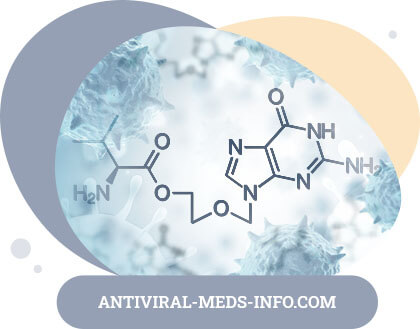
Herpes zoster, commonly known as ‘‘shingles’’ is nothing more than the varicella-zoster virus reactivation, previously-stored or latent in the body of those who suffered from ''chickenpox'' in childhood. It is a viral infection caused by the human herpesvirus type 3, which is responsible for all the clinical manifestations of varicella.
This germ infects the body for the first time producing the well-known ''chickenpox'', which is described by acute very itchy skin lesions giving the appearance of a rash, turning into blisters after a few days then scabs that finally fall off, leaving a scar in most cases.
Generally, when this clinical portrait ends in about 10 days, the virus travels to the small nodes and is silently stored for years (latency period), waiting for a new opportunity to hit.
When the immune system suffers some damage, due to stress, severe acute respiratory infections or old age, this virus stored in the dorsal root ganglia (DRG) takes advantage of the fact that our defenses decrease and reappears in the form of Herpes zoster, and is here where Valacyclovir performs a crucial therapeutic purpose.
Herpes zoster is nothing more than the cutaneous manifestation of the virus reactivation in the nervous ganglia, giving the rash appearance that follows a path on the skin, popularly known as ''shingles''. It usually affects the thoracic nerves, being quite painful and uncomfortable, and representing a threat to our body.
Valtrex® is indicated in this infectious process to inhibit viral replication and reduce associated symptoms, such as pain and rash, but mainly pain, which is the most prominent symptom described almost as neuralgia (disabling pain).
Herpes Simplex Virus (HSV) infections are also mentioned among its indications; cold sores, genitals, or any other mucocutaneous herpes simplex manifestation is known.
Cold sores: It is a viral infection caused by the Herpes Simplex Virus 1 or 2 establishments in the mouth, but frequently HSV 1. It manifests as vesicular lesions with clear yellowish fluid inside, they are highly painful and usually located around the lips, especially in the lip corners, but it can also appear on the gums, palate, or any area of the mouth.
All symptoms last about 2-3 weeks but can be reduced by starting antiviral treatment.
Genital herpes: Like the previous one, it is a viral infectious process produced by HSV 1 or 2, being the 2 common. In this case, vesicle-like lesions appear in the genital area.
This infection is considered a Sexually Transmitted Disease (STD) and as one of them, the virus is transferred through sexual contact (unprotected relationships) with a previously infected person.
Genital herpes lesions are easily recognized by itching, stinging, pain, or heat sensation, also, the anal-genital area looks very swollen and red, later, vesicles with liquid inside can be evidenced, and in women, they can affect even lips, vaginas, and cervix.
These lesions are usually preceded by a phase of ailment with fever and general weakness; however, in many cases this phase is imperceptible or fading.
The prescription of Valtrex® in these cases is given for both treatment and prevention; in the first case to relieve the symptoms of primary acute infection and in the second place to avoid the symptoms recurrence, besides, it has been shown that its preventive indication reduces the viral transmission risk. Moreover, its recommended-indication is in patients with HIV infection who suffer from genital herpes regularly.
A significant risk decrease of Herpes Simplex Virus transmission between sexual partners has been observed with Valacyclovir when one of them has ever contracted the disease. Thanks to this, you can enjoy safer sexual practices.
There are additional situations where Valacyclovir usage is also justified, especially in a prophylactic (preventive) way, as in the organ transplant infection case.
In this particular, Cytomegalovirus (CMV) infection after organ transplantation is one of the main causes of kidney transplantation loss. This represents a risk not only of therapeutic failure but also of death due to kidney role involvement.
Cytomegalovirus is, as its name indicates, a virus of the herpesvirus family that can affect not only post-transplant patients but also any individual. It usually involves the liver, upper respiratory tract, causes inflammation of the joints causing severe pain (arthritis), or manifests as mononucleosis.
This condition can affect up to 40% of post-transplant patients if it is not treated promptly, and the key in these cases is prevention, having prophylactic and anticipated therapy with Valacyclovir among the essential guiders.
Likewise, Valtrex® can be indicated in other diseases with mucocutaneous manifestations due to any virus of the herpesvirus family, as long as it is indicated and prescribed by a specialist.
Interactions:
There are very few significant interactions described with other drugs until now, however, through certain elimination mechanisms, such as renal, it can face other drugs and interact.
Drugs like probenecid can interact with Valacilovir, but why? This drug acts on the kidney by decreasing the acid uric reabsorption through the inhibition of its transporters in the convoluted renal tubules, to treat diseases such as gout or pathologies cursing with high uric acid levels.
Through this mechanism, any other drug that simultaneously administered with probenecid can change its metabolism and elimination (excretion), increasing its blood levels even more than necessary. Although this information is important, its significance has not yet been revealed and it is not recommended to decrease the Valacyclovir dosage when taken in conjunction with probenecid.
Another drug, cimetidine, whose mechanism of action is to compete for the binding site on histamine H2 receptors in the stomach to decrease the gastric acid secretion and gastric enzymes such as pepsin, could also interact with Valacyclovir.
Cimetidine is a gastroprotective drug that, similar to probenecid, has renal pathway that could decrease Valacyclovir clearance and elimination, however, it is not significant to date and in the same way, it is not recommended to diminish Valacyclovir dosage during simultaneous treatment.
Although, there are situations where strict monitoring Valacyclovir administration is necessary, as in individuals who require high doses of this drug (4g or more per day), especially when it is administered concomitantly with other medications that have some renal system steps, as happens with cyclosporines and tacrolimus, both immunosuppressive drugs.
Remember that it is always necessary to consult a professional before taking this or any drug. It is also obligatory to tell your doctor if you suffer from other conditions that require taking different medications to avoid any interaction or side effects. Talking about other illnesses (new or old) can save your life.
Side effects:
Side effects depend on the affected systems and how often they occur, and according to MedDRA terminology they are classified as very common, common, uncommon, rare, and very rare.
Very common side effects are those that occur in 1 or more individuals for every 10 people and to date, no symptoms have been reported with such frequency.
As for the common ones, they are those that appear in 1 or more people per 100 individuals. In this particular, manifestations in the central nervous system such as headache and gastrointestinal such as nausea or vomiting have been described. Although they are common, this does not mean that you will necessarily suffer from these annoying symptoms.
About uncommon side effects, these are defined as those that occur in 1 or more patients per 1000 individuals. In this category, disorders linked to the respiratory system or rib cage have been reported, such as moderate to severe breathing difficulties and skin changes or adjacent tissue such as rashes or increased sensitivity of the skin to ultraviolet rays (sun).
Rare side effects are known as those that occur in 1 per 10,000 individuals and this category includes psychiatric signs such as dizziness, confusional states, or hallucinations, and although they may be sudden onset, these reliefs immediately when the Valacyclovir doses are suspended or decreased.
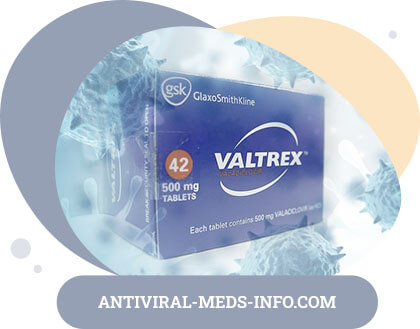
This same classification includes gastrointestinal conditions such as abdominal ache, vomiting, and even diarrhea; skin disorders causing itching, and also kidney or urinary disorders, such as renal clearance damage or kidney failure.
So, when talking about very rare side effects, they happen in less than 1 individual per 10,000 people, it means they are extreeeeemely unusual, even when described.
In this classification blood disorders such as leukopenia, immune system disorders such as severe allergies that reach anaphylaxis state, psychiatric manifestations such as psychomotor agitation, tremors, gait, and speech disorders, psychotic states and even seizures are mentioned.
Hepatobiliary architecture changes are described too, such as increased levels of liver function enzymes, fortunately, these increases are reversible once treatment is suspended. Angioedema or urticaria has been also dermatologically reported.
As previously mentioned, this unwanted symptoms description does not necessarily mean that you will suffer from any of these ailment, however, if during treatment with Valacyclovir you experience any annoying signs that you had not noticed before treatment, you should consult a professional immediately, even if this symptom has not been described in this segment.
Efficacy: Why Choose Valacyclovir?
Its efficacy has been confirmed not only in infections caused by viruses of the herpesviridae family, such as herpes zoster, genital or labial, but it also works beneficially in HIV infections.
A study conducted by the Clinical Infectious Diseases and supported by the National Institute of Health (known as NIH) proved that Valacyclovir works amazingly as a treatment in patients with HIV without carrying the herpes virus.
This study finished in 2015 opened the gates to a new HIV treatment, which compared to Acyclovir (the first worldwide antiviral), Valacyclovir works as a prodrug in individuals whose HIV infection is not simultaneous with HSV, interfering with the viral replication of the former.
Surprisingly, the mechanism by which it inhibits HIV is the same in HSV infection. Thanks to this research, it was shown in a group of patients that the virus's blood amount significantly decreased after 12 weeks of Valacyclovir treatment, and now, it can be included in antiviral therapy against HIV.
Finally, Valacyclovir has proven to be a highly effective drug in HSV infection treatment by reducing the disease course from 15 days to just 5 days; significantly decreasing the associated symptoms like pain, and also stimulating the skin healing with easier doses.
Articles
Human body and viruses: The steady and perfect synergy
The eyes to see, the ears to hear, the nose to smell, and the mouth to speak, this is how amazing and complete our body is, a structure made up of thousands of pieces where each one performs a specific function and which, together with the rest of the systems, represents the source of life.
Although all human beings are made up of the same parts and systems, we are not the same people in the end. Each human being has individual qualities that distinguish and differentiates them from the rest, for this reason in medicine two plus two are not four, it can be 3 or even 1, there are so many possible answers!
Among the systems that build us, mention is made of the endocrine system, the musculoskeletal system, the nervous system, the lymphatic system, the gastrointestinal system, and the immune system, the latter having the important function of protecting our body from any external aggression.
The immune system consists of the set of cellular, substance, tegumentary, and humoral structures that are responsible for protecting and defending the rest of our systems, organs, and cells from any external warning.
Among the qualities of this system, it stands out that allows deciphering between the real elements of our body and external agents, classifying them as ''strange '', and when a substance is discovered as it, this system automatically activates and attacks.
In addition to its selective capacity, this system has memory; this means that when constantly exposed to a harmful substance or agent, it has the power to act on a second exposure by attacking. That agent will always be remembered as a harmful element by the body from the moment of a second exposure.
According to its development, this system can be classified into two: acquired immunity and innate immunity. Innate immunity is described as the one we are born with, the natural one; it is formed by cells specialized in defense, chemical and biochemical immunity represented by body pH, the acidic environment, and other elements like the protective enzymes that destroy everything in their path.
Within this natural classification, physical and microbiological barriers are also included. The physical barrier is something like our shield, the suit that protects us from any external agent, being made up of the skin and integumentary tissue, the mucous membranes that line all our internal cavities, and the mucus produced by cells to protect.
This physical barrier allows it to be the first natural shield against any external harmful element, the skin being the largest and most important organ. The skin is not only an organ of aesthetic perception but also has an endocrine function, regulates temperature, and also protects, that is why it is so important to keep it healthy because it is our first protective tool.
Mucous membranes and mucus are included in this same physical category. The mucosa is defined as that layer of the internal lining that covers all our cavities, it is characterized by having a pinkish color, and by producing mucus, this is a viscous, transparent substance (depending on where it is produced), which is identified because it is highly adherent.
Mucous composition not only contains protective chemical elements but also performs a sweeping function in all cavities, thus, when we have mucus in the nose, it contains all the allergens and microbes that may have accessed our respiratory system, giving us the possibility of expelling them.
Now, getting into germs, I bet you did not know there are microbes in large quantities in our body with the function of protecting us. Well yes, the microbiological barrier represents that immunity made by germs such as bacteria, viruses, parasites, and fungi that live harmoniously and synergistically in our body.
For example, we have hundreds and hundreds of bacteria and parasites in our digestive tract necessary to contribute to immune development, called bacterial flora, this important germs community lives with us from birth, and as our diet expands, it improves with us. Without bacteria living in our intestines, we could not even digest food, defecate, or take advantage of the nutritional food properties.
The same happens in the vagina and mouth, there are commensal microbes that allow keeping the mucous barrier through the secretion of protective substances and competition with other external pathogenic microbes to maintain the pH of our cavities in balance.
But if we all have germs in our bodies, how do we not get sick? Simple, these microorganisms live in complete harmony when our immune system is fit so that these living beings can coexist in peace they must be in the perfect quantities and perfect conditions, the infection happens when one of these elements is modified.
| Measures of URS | Baseline Month | Placebo Month | Washout Month | Valtrex™ Month |
|---|---|---|---|---|
| No. URS episodes | 12 | 6 | 1 | 11 |
| % all URS episodes | 40 | 20 | 3 | 37 |
| No. subjects reporting URS | 8/25 | 5/20 | 1/20 | 11/21 |
| % subjects reporting URS | 32 | 25 | 5 | 52 |
| Total number of symptom days* | 50 | 39 | 28 | 72 |
| Mean days URS per episode** | 6 | 5 | 7 | 7 |
| Range of URS days per episodes** | 1-24 | 2-14 | N/A | 3-15 |
| * Total number of symptom days is the number of days of reported URS for all subjects in each month. ** Mean days URS per episode attributes all days of URS to the month in which the symptoms were first reported. | ||||
Why do infections happen?
Infections occur when one of these immune barriers is disrupted, for example; normally we have germs with protective functions in the mouth and upper respiratory system, but when the number of microbes gets out of control because of bad germs outnumbering the good ones, and the infection takes place.
Infections are nothing more than the colonization or invasion of dangerous and highly harmful germs in any region or system of our body, compromising the central nervous system or cause skin, urinary, and even ophthalmic disease. The truth is infections can happen anywhere in our bodies.
Different events develop during this pathogenic process, being the damage to the immune system the first to happen, the arrival of dangerous germs that colonize any region is facilitated after this, followed by the chain of inflammatory reactions that lead to acute infections signs and symptoms, leading to chronic infection, and in worst cases to a serious life-threatening systemic infection, if not treated timely.
There are several factors, also called ''variables'' that intervene during this disease development and may modify its happening or not, these are transmission route, incubation period, quantity or load of microorganisms, the virulence of the germ, its capacity invasion, disease time and immune status.
The transmission routes are nothing more than the ways or paths by which the virus, bacteria, parasite or fungus takes advantage of to reach the human body, for example, with the current COVID-19 pandemic, the virus transmission route can be direct and indirect; direct between a healthy and a sick individual through drops of nasal and oropharyngeal secretions delivered by sneezing and coughing, and indirect by the survival of the virus in objects.
Another transmission route example would be genital skin infections by the herpes simplex virus (HSV), in this case, the transmission route would be unprotected sex with a sick individual, for this reason, it is considered a Sexually Transmitted Disease.
The incubation period is defined as the necessary time for the first disease symptoms to occur from the moment of the first exposure to the germ. In short, it is the time between contact and the first symptom.
The microbiological load is the amount or number of received pathogenic organisms during contact, this influences a lot because the symptoms will be more noticeable and even serious if caught a high viral load.
Both virulence and invasiveness are intrinsic elements of the germ's characteristics. Certain microbes have a greater ability to adhere to the mucosa; others are capable of inducing a severe inflammatory response because of its highly pathogenic functions, while others are harmless or may go unnoticed.
Of course, all of this depends on our immune system state and its ability to respond quickly to any foreign element.
The illness time matches a part of the pathologies called the natural disease course (disease natural history) and this differs greatly between people and even between diseases.
Infectious disease classification according to their duration can be acute and chronic, but the natural infection course from the first symptom to its complete resolution is approximately 15 days or more without any curative element intervention, but this changes a lot and one person may get better in 5 days while another spends two weeks sick with the same, both with the same disease.
How can viruses cause infections?
As we already mentioned, infections can be produced by different microorganisms from viruses, bacteria, parasites to fungi.
Each germs composition is different and, according to its pathogenetic characteristics, it can trigger diseases in different ways, bacteria, for example, they are usually resistant to drugs and powerful germs due to their architectural composition compared to viruses or parasites.
Viruses are defined by being intracellular organisms, this means that they necessarily need to take advantage of our healthy cells, living through them to invade and colonize anybody. For example, inside pneumocytes (the cells that make up the lung alveoli) live viruses that cause respiratory diseases. Once inside them, thanks to cell proteins and elements they can reproduce and live, turning a healthy cell into an infected one.
As infectious living particles, viruses have DNA, lipids and other elements in their composition, but they cannot survive by themselves, recognizing the need to take advantage of a healthy cell metabolic compound which is why most viral diseases are self-limited, that is, they have a quick natural course because the body itself detects these diseased cells and eliminate them through all the immune responses that we mentioned at the beginning of this section.
However, although viruses always have an end, there are situations or health conditions that can weaken the immune response, making it light and inefficient, prolonging the virus visit in the body and consequently the disease and its symptoms. At this moment is where antivirals play a principal role by stopping viral replication to mainly reduce days with the symptoms, and finally shortening the natural disease course.
How do I know if it is a viral or bacterial infection? The real dilemma
We must mention first that bacteria have certain intrinsic qualities that differentiate them from viruses, and as we have already mentioned, viruses are needy microscopic particles that are barely made up of DNA or RNA while bacteria unlike viruses, bacteria, unlike viruses, have a complex and sophisticated structure supported by a cell wall that makes them resistant and powerful, without needing a host cell to live.
Due to these qualities, viral infections are known by having slightly milder and uniform symptoms compared to bacterial infections, however, they can be very annoying and make our day difficult.
Viral infections can be respiratory, skin and mucosa, gastrointestinal, liver, compromise the central nervous system and even produce systemic infections with organism effects.
Viral diseases include chickenpox, herpes zoster, genital herpes, viral hepatitis, infectious mononucleosis, the acquired immunodeficiency syndrome (AIDS), papilloma-like skin lesions, and the typical annual respiratory diseases by the syncytial virus, parainfluenza, influenza, adenovirus, and now coronavirus.
When it comes to a respiratory tract infection, these can vary, however, it can be differentiated from a bacterial infection because its symptoms are uniform, bilateral, associated with general malaise, and with little or no secretion of pus, as is the viral rhinopharyngitis.
Bacterial respiratory infections are identified by having an abrupt course with pustule-like lesions where pus is stored, they can be bilateral or unilateral, reaching high body temperatures with general discomfort symptoms or not.
Regarding infections with skin manifestations such as herpesviruses and papillomaviruses, these are known to be harmless with self-limited lesions at the contact site, and in certain cases requiring antiviral therapy when symptoms are bothersome and interrupt the daily performance, as happens with herpes zoster, where the disease end on its own in about 15 days without major consequences or can trigger disabling symptoms such as severe neuralgia-type pain where the use of drugs to reduce viral load is necessary.
As we have clarified, indemnity and the state of the immune system play a fundamental role in infections and it is what determines that diseases manifest differently in each person.
Let's take this situation for example; the common winter flu has lasted all season on you, however, your neighbor has only manifested a few sneezes for a week and nothing more, this does not mean that your immune system is not in good condition, it just means that it depends on the viral load and qualities.
Although when it comes to medicine and health, everything is variable and diverse, which will always prevent the infections development and any other diseases is to keep an optimal immune system.
It is necessary to eat in sufficient quantities to sustain a good immune system, including vegetables, carbohydrates, proteins, good fats, and a lot of water in our diet. Exercising cannot go under the table, running or walking a few hours per day helps us to let out hormones that keep us healthy and happy.
You may feel that mental health is not important but you would be surprised how many diseases are triggered by this, including cancer. Keeping body and mind healthy helps us face stress or anxiety situations, these are the common denominator in any disease development, weakening the immune system, and promoting any infection.
